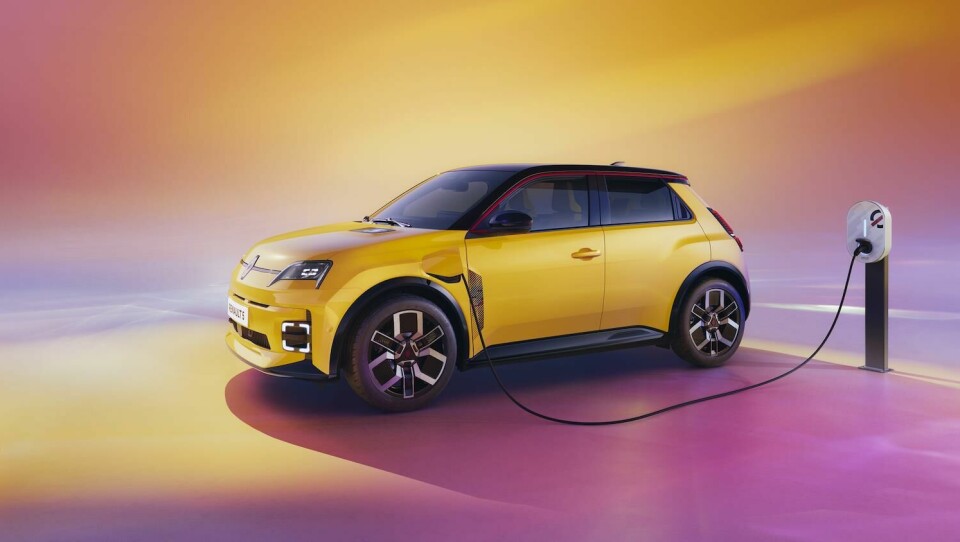Speed to market is critical for affordable electric vehicles
With more Chinese electric vehicle (EV) makers planning to launch products in the UK in 2024, the race is on for UK and European OEMs to make their mass-market ranges available as quickly as possible. The question is, can they catch up and how should they go about it, ask Vendigital’s Dom Tribe and Sheena Patel

The all-electric Renault 5 E-Tech was launched at the 2024 Geneva Motor Show and has been billed as a ‘cheap’ EV to compete with the Mini Electric and Fiat 500. Celebrating the car’s arrival in an exclusive article for Autocar magazine, Renault’s CEO, Luca de Meo, commented on the fragility of Europe’s car industry and the need to invent new business models to invest in affordable and sustainable mobility. He called for greater coordination when it comes to setting standards and regulations, and greater industry collaboration focused on innovation.
While this approach is vital to compete with low-cost Chinese models, it is notable that the Renault 5 E-Tech’s launch has taken a little longer than expected. The concept version of the car was previewed in January 2021. Three years on, Chinese-backed MG Motors reported sales of more than £1 billion in the UK last year, and its all-electric MG ZS SUV was the top-selling car in Spain last December. Western manufacturers need to move more quickly to avoid falling further behind.
Slowdown in take-up
Several Chinese EVs are planned for release in the UK in 2024, including BYD’s Seal U, Skywell ET5 and potentially also the Nio ET7. Sales of existing ranges such as the BYD Atto 3 have also been growing globally. By contrast, like-for-like EVs manufactured in the UK are significantly more expensive than their Chinese counterparts, and about a third more expensive than fossil fuel-powered alternatives. This price differential, combined with a lack of public charging infrastructure and government-led incentives for private buyers, has contributed to a slowdown in the switch to EVs. As recently reported by the Society of Motor Manufacturers and Traders (SMMT) half of would-be EV buyers are now prepared to wait until after 2030 to switch, compared with just one in ten last year.
In terms of the planned rollout of all-electric cars in the UK, domestic manufacturers are already committed and, if anything, the push towards electrification is getting stronger. JLR has invested in the creation of a new Electric Manufacturing Propulsion Centre and is planning to launch nine pure electric models by 2030. The luxury carmaker is also investing a further £15 billion to transition to a net zero carbon business across its supply chain, products and operations by 2039. Nissan has also committed to producing all-electric versions of the Qashqai and Juke in the UK, as well as the next-generation Leaf, which is renowned as the world’s first mass-market EV.

Balancing capacity, reducing complexity
A critical factor for car makers when planning to pivot to all-electric vehicle production is, of course, timing. Once they start apportioning production capacity to new EV models, they will be operating with two sets of overheads and needing to manage capacity of each. To offset some of this upfront investment, they must continue to optimise profits from the sale of existing internal combustion engine (ICE) ranges. They can further mitigate risk by creating high-quality, data-powered scenario models to look at how best to balance capacity and reduce complexity of their products and operations.
As UK carmakers prepare to increase EV production, special care is needed to establish resilient and efficient supply chains. Value chain considerations are especially important at this stage, as carmakers and their strategic suppliers need access to the best electronics and software engineers, and electric powertrain capability, to develop models that offer optimal performance at an affordable price point. Where new platforms for EV models are planned, it is important to stay focused on the long term so modifications can be made to facilitate the production of next-generation models in a few years’ time.
Pace of change
Legislative changes are helping to set the pace of the switch to EV production. In particular, the Zero Emission Vehicle (ZEV) mandate requires that more than one in five cars manufactured in the UK in 2024 must be zero carbon emitting, and this proportion increases in the run-up to 2035. By default, these net-zero-carbon vehicles must be battery electric, as hydrogen fuel cell EVs and other powertrain technologies are not yet viable.
Despite the push to electrify production, there are significant risks attached. If carmakers and OEMs move too slowly, they could miss out on opportunities to secure a foothold in a growing market. If they move too quickly, a demand shortfall could catch them out and undermine their business model.
Many UK and European carmakers have already invested significantly in R&D activity and converting production lines. They are now looking for opportunities to share risk through collaboration. For example, where critical equipment, skills, components or raw materials are in short supply, or the flow of goods is likely to experience disruption, vertical integration can be an effective way of securing whatever’s needed. In some cases, rival brands are collaborating to realise mutual benefits and gain access to cutting edge technologies.
For example, Subaru and Toyota’s collaboration, which was established in the 2000s, has been described as a symbiotic partnership, with Subaru developing the all-wheel-drive-system for the two brands’ respective EV models, and Toyota producing the battery pack and electric powertrain. In other instances, vertical integration has been a driving force for OEMs to gain control and IP to help differentiate their EV offerings. Joint ventures and collaborations between western carmakers and Asian manufacturers of everything from semiconductors to inverter technology, e-motors and cathode active materials are becoming more commonplace.

The downside of so much supply chain integration is that price information is less visible and EV manufacturers may not be able to benchmark costs accurately. This is adding to the challenge of pricing new EV ranges. Many small and mid-range EVs have a higher price point than many consumers are prepared to pay, even though their running costs are likely to be significantly lower than an equivalent ICE vehicle. More consumer awareness of the total cost of ownership may encourage consumers to make the switch to EVs. With higher insurance costs for EVs and electricity prices remaining strong, the cost to consumers isn’t always clear. The recent launch of new V2G charging services for EV owners may help, as they can now benefit from even lower electricity costs in exchange for allowing their vehicles to be flexibly charged and discharged to meet energy grid needs.
EV makers in the UK and Europe can and will catch up with their Chinese counterparts, but more must be done to incentivise the switch for consumers and demonstrate the lifecycle costs associated with owning and running an EV. In addition, further collaboration will enable EV makers and their supply chains to spread the cost of pivoting to EV production while innovating solutions that could give their vehicles that all-important competitive edge.
Dom Tribe, partner, and Sheena Patel, director, are both automotive sector specialists at management consultancy, Vendigital





